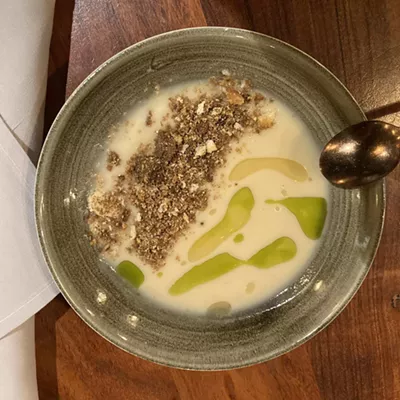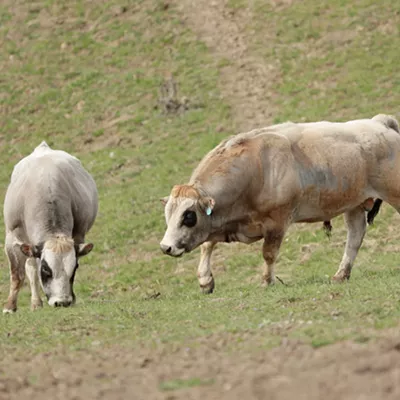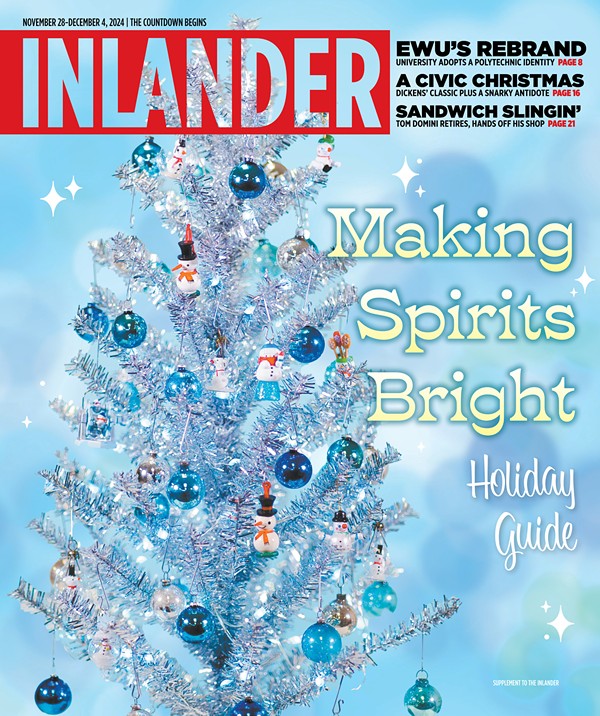Wild ginger, balsamroot, cattails and yarrow line the slopes of Mount Spokane. Dandelions and nettles are plentiful in our backyards or neighborhood vacant lots.
You don’t have to go far to forage a bounty of wild edibles around Spokane. Most of us recognize roses and honeysuckle but don’t think of them as food, says Moria Felber, a local certified health counselor and cooking instructor.
What about carrot tops, raspberry leaves and marigolds from your garden? They’re edible, too.
“Start with what you know and build on it,” Felber suggests. “Clover flowers are real safe. They’re pretty in a salad.”
“It’s all about getting into the mindset that these are nutritional treasures. Wild foods growing locally really are superfoods,” says Felber. She explains that since wild edibles grow in uncultivated soil, they tend to have deeper roots, which gather more nutrients. “Think about the global issues of food. There’s a lot you can forage and cut down on your carbon footprint.”
“Nettles are really high in iron, calcium, folic acid and chlorophyll. They’re good for cleansing,” says Felber. Head for a wet, shady area, don your gloves and pick the leaves from the top of the stalk where they are most tender. You can steam them like spinach, put them in a smoothie or dry them for tea. The seeds are also edible, and high in protein. Dry them, grind in a coffee grinder and sprinkle them on salads or oatmeal.
A Field Guide to Edible Plants
{embed_video}
If childhood memories of burning red welts leave you skittish about picking nettles, go and see Mo Bereiter at area farmers markets. He sells fresh and dried nettles, raspberry leaves and mushrooms. I made an amazing stir-fry with some of his licorice-y anise mushrooms, which are easy for novices to detect. “Give it the sniff test. It’s the only mushroom that smells like anise,” Bereiter says. As for identifying corals, morels and king boletes? “It’s the school of hard knocks, girl,” Bereiter replied.
If you’d prefer not to play psilocybin roulette, consider joining the Spokane Mushroom Club. Their next meeting is at Mission Park on July 26 at 6:30 p.m. You’ll likely meet longtime club member Lynda Foreman, who says mushrooms are still popping up due to the cold spring.
“Shaggy parasol mushrooms are common under blue spruce and also come up in compost piles. They’re great in stir-fries or miso soup,” she says. Look for shaggy manes in gravel areas and edible fairy ring mushrooms in your lawn.
And don’t discount those pesky dandelions. “Get them in the young tender stages before they bloom or they turn bitter,” warns Foreman. Steam them up like spinach, or add chopped greens to a salad. The yellow flowers are edible — just make sure you don’t forage in parks where dogs might “flavor” the plants. Try to find areas with lots of weeds, as it’s a good sign pesticides aren’t being used. Look for watercress by the stream at the Finch Arboretum, a good place for chemical-free foraging, says Foreman.
Gregory Tilford’s Edible and Medicinal Plants of the West gives information on wild edibles in our area, the best time of year to harvest the plants and what to do with them once you’ve got them. It also includes helpful information on look-alikes that resemble wild edibles but are potentially poisonous. But remember, the best advice is to go with an expert — and when in doubt, throw it out.
The surrounding mountains and rivers are a treasure trove of wild blackberries, raspberries, strawberries, thimble berries and salmon berries. Gain a little elevation and you’ll find mountain blueberries and elderberries, which have been touted to reduce cholesterol and boost the immune system.
And of course, don’t forget the illustrious huckleberry. This is one wild edible that’s worth your time to forage, considering they sell for $30-40 a gallon. The trick is to find a good spot, return every year and protect it like your birthright.
Hint: Look under the Great Escape Quad chairlift at Schweitzer Mountain.
Sauteed Wild Mushrooms with Nettle Greens
Recipe courtesy of Moria Felber of Wild Thyme Kitchen, who recommends serving this dish over red meat, barbecued chicken or roasted cauliflower.
|
8 cups mixed wild local mushrooms – porcini, coral, oyster, morel, or shiitake |
1/3 cup red wine |
• Clean mushrooms with a mushroom brush or rinse under cold water. Drain well. Remove tough stems and slice mushrooms into bite-sized pieces. Set aside. Use rubber gloves to handle nettles, placing them in a medium-sized steamer basket filled with 2 inches of water. Cover and steam for 15 minutes.
• Heat olive oil and butter in a large sauté pan over medium-high heat. When butter bubbles, add garlic and sauté for two minutes. Add mushrooms and onions and continue to sauté for about eight minutes.
• Meanwhile, combine tamari, red wine and honey in a small bowl. Pour this mixture over the mushrooms and reduce heat to medium. Whisk miso paste and hot water together in a small bowl until the miso looks like gravy, then add this to the sautéed mushrooms.
• In another small bowl, whisk together tapioca starch and cold water, pour over the mushrooms and reduce heat to low. Stir well and add well-drained nettle greens. Break up the clumps of steamed nettles and incorporate into the sauce. Remove from heat and season with desired amount of salt and pepper. Drizzle a small amount of truffle oil over the top and serve.

















